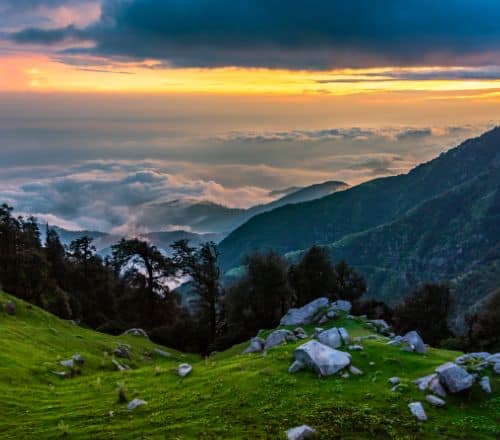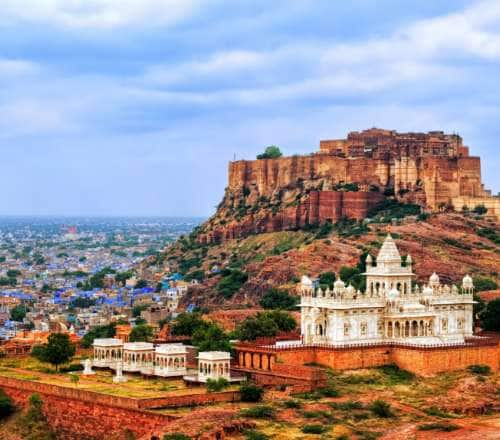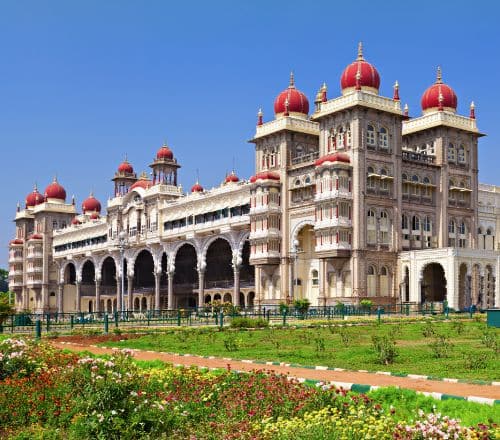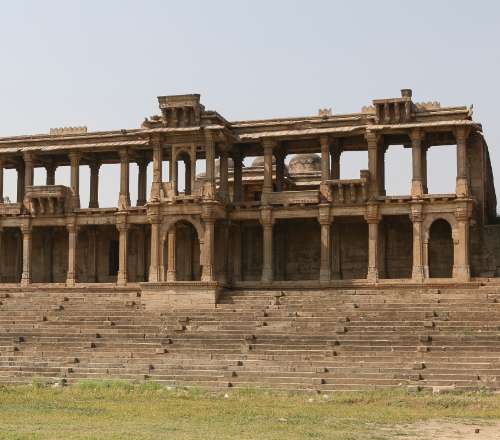Stay logged in to proceed with bookings, orders and offers.
On changing the terminal, you will loose items in your cart. Are you sure you want to change your terminal?
Discovering Lord Shiva’s beloved city
Varanasi is synonymous with Shiva and many theories abound – some believe the God of Destruction founded the holy city, while others claim he migrated with Parvati from Mount Kailash to Kashi in the harsh winters. But there is no dispute that Shiva has a special bond with this city.
I see evidence of this everywhere – in the temples dedicated to Shiva, in his photos hanging on every corner and in every tea stall, and in the Aghori babas, ascetic followers of Shiva, who roam the ghats chanting 'Alakh Niranjan!' This makes Varanasi the obvious choice of destination to experience Mahashivratri, the annual festival dedicated to Shiva, in all its grandeur.
The famed Kashi Vishwanath Temple, in the heart of the city, draws hundreds of thousands of devotees on Mahashivratri every year. Prayers and aarti start in the wee hours of the morning and go on well past midnight. The thoughtful manager of my current homestay has told me to get there early, as the temple tends to get crowded during the festival. Queues can be six to eight hours long! So I head to the temple at 3 am, bleary-eyed and wrapped in a shawl.
As I get closer to the temple, I can appreciate the gilded spires and domes, which probably earned this structure its moniker 'Golden Temple'. The early hours don’t seem to have deterred fervent devotees, who stand patiently in a serpentine queue for hours just for a quick glimpse of the presiding deity.
The jyotirlinga stands proud on a pedestal decorated with garlands and flowers. Devotees and priests pour milk and water in a steady stream while chants of Om Namah Shivaya! fill the air. It’s a serene yet invigorating atmosphere.
When I finally reach the diety, before I can offer my prayers, I’m hurriedly ushered aside to make way for devotees behind me. The sun has risen by the time I emerge from the temple, and the queue has grown considerably longer.
Tip: Plan to reach the temple early, at least before 7 am, for a shorter waiting time.
While in Varanasi to witness the annual festival honouring Shiva, you can't ignore the holy Ganga. According to mythology, it was Shiva who tamed the fierce celestial river in his locks of hair, before letting her cascade to Earth. Varanasi thrives on the ghats lining this expansive river, and the city's residents are inextricably linked to the Ganga.
Locals here are always ready to share tales of childhoods spent idling by the river. They've grown up celebrating weddings, the birth of children, and the passing away of loved ones on the same banks.
So my next agenda is to explore the ghats and the Ganga. I’ve chosen to do a sunrise boat tour of the ghats. This requires me to wake up at 4 am, which my sleep-addled brain protests. But when I do manage to head down to the famed ghats, I'm so glad I get to experience the holy river in the quiet of dawn.
Me and a bunch of enthusiastic tourists clamber into a rowboat bobbing on the river by the ghat steps, and off we go. The boatman’s oars slice through the water smoothly. A handful of locals and priests stand on the river’s edge chanting and praying to the mighty river before taking a dip to cleanse themselves of sins. As the sky turns from inky black to faint purple, I slip into a meditative state.
As the sun rises, more people and boats appear. We sail past the Dasashwamedh Ghat, the Ahilya Ghat, and the Manikarnika Ghat, a traditional cremation ghat where pyres are burning. The last stop on the tour is the Scindia ghat, where we admire the otherworldly sunken temple.
If dawn at the ghats is magical, sunset is magnificent because this is when the Ganga aarti takes place right at the water’s edge. The perfectly synchronized aarti is a sight to behold.
Holding enormous lamps, young priests swirl the aarti with a characteristic flourish. I stand among other tourists and locals watching the smoke from the diyas dance in the air, all of us in a shared trance.
Tip: You can watch the Ganga aarti from the ghat or the river aboard a boat docked at the steps. Both are equally incredible experiences.
Varanasi is a foodie’s paradise. The Blue Lassi shop, famous for creamy and wholesome lassis, is a short distance from the Kashi Vishwanath Temple. You can choose from an extensive range of traditional yoghurt drinks.
I settle for the saffron dry fruit lassi. As I sit on a rickety bench and wait for my beverage, my eyes wander over the shop's blue-painted walls filled with notes of appreciation left by visitors, both Indian and international.
When I’m handed the frothy drink, my eyes widen at the kulhad overflowing with thick lassi and generous lashings of saffron, cashews, almonds and pistachios. The otherworldly sweetness blended with the crunchy nuts is divine – I highly recommend it.
Another beverage I'm told I shouldn't miss, especially during Mahashivratri, is thandai. A delicious concoction of milk, spices, dry fruit, saffron, and one special ingredient believed to be Shiva’s favourite – bhaang (made from cannabis leaves). The drink is found in many shops across the city.
I choose Baba Thandai, which is just up the road. I opt for a thandai without bhaang, and as soon as I take a sip of the chilled drink, I feel a burst of flavour in my mouth. It’s sweet, but with hints of spice from the black pepper.
Tip: If you have never consumed bhaang before, beware, as the effects are pretty strong.
My next stop is Shri Ram Bhandar, the locals' favourite breakfast place for kachori and jalebi. Kachoris are stuffed with dal and spices and served with an aloo-matar curry that’s finger-licking good. I finish my breakfast with a piping hot jalebi fried in desi ghee.
Apart from street food, the city also offers some fantastic fine-dining options, each with its unique culinary experience. One among them is satvik thali at Varuna restaurant in the Taj Ganges, Varanasi.
I’m worried about food cooked without onion or garlic being bland, but this restaurant dispels that notion with its assortment of vegetable curries, dals, rotis, masala rice and desserts. The food is prepared with the quality ingredients and flavours that one expects from a five-star hotel, without compromising on the principles of satvik cuisine.
Varanasi has a longstanding tradition of craftsmanship, so shopaholics have a reason to rejoice. I’m told Vishwanath Gali is a fantastic place for shopping. So I wander the tiny lanes, occasionally dodging cows and calves, and pass shops sitting neck-to-neck selling colourful bangles, jute bags, earthenware and more.
I spot many stores selling handmade lacquered wood toys that Varanasi is famous for. The brightly-coloured toys are cute and kitschy and make for great souvenirs. I pick up an adorable pink elephant toy and a miniature cycle rickshaw for friends back home.
Pro tip: Bargain Hard
If antiques and brass curios pique your interest, head to Thatheri Bazaar for an assortment of artefacts, including Shivlings. This marketplace is also home to the much sought-after Banarasi silk sari stores. Banarasi silk is held in high regard among fashionistas the world over.
One look at the elegant, glimmering zari, and I can see why. There are beautiful motifs and detailed designs on jewel-toned saris. The fabric is soft to the touch and showcases superior weaving. I want to buy all of them, but given the superior craftsmanship, prices for authentic Banarasi silk saris run into lakhs – so I settle for just one.
Along with souvenirs, the most precious thing that I bring back from this holy city is a different perspective on spirituality, which is a living, breathing entity here. As I bid farewell to this chaotic labyrinth of a city, I realize there's so much more here than meets the eye.
Varanasi might not be the cleanest or the most organized place in the country, but beneath the surface hide many treasures like fine arts, culture, education, religion, history, and heritage – they're just waiting to be discovered.
Mahashivratri is just one of many religious events which bring out Varanasi's hidden beauty.





The Adani One expressly disclaims all liability, direct and indirect, in respect to actions taken or not taken based on any or all the contents of this Blog. The Blog is an opinion of the contributor based on the collation of data from various sources and is provided only for information purpose. Adani One does not canvass, advertise, solicit, invite or induct for any product, merchandise, information, brand or any other materials mentioned in the Blog, nor does it obtain any monetary benefit from the same. Reader is advised to read and apply his/her intellect and discretion in this regard. Any Intellectual Property mentioned in this blog belongs to the rightful owner. We do not intent to claim any interest over the same.